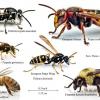Hi all. as some of you already know, i am right in the middle of writing my connect 4 program so far i have a very nice bit board representation together with alpha beta algorithm to solve the game. ofcourse my goal is to make it play perfect and see to the end of game tree.
But in order to optimize the speed of the engine, i am now using an evaluation function for the first 4 moves (for each player) and after that trying to brute force the game to the end. if i see that it complete solving the rest of the game in a reasonable time, i will maybe use a database for the first 8 plies to make it perfect (who knows,maybe the eval' function can make good enough first 4 moves ![]() ) The killler moves gave me a HUGE boost (!) and also the transposition table. when trying the History heuristic instead of the killer moves,the improvement was there but not like with the killer moves. perhaps my implementation of the history was not good enough
) The killler moves gave me a HUGE boost (!) and also the transposition table. when trying the History heuristic instead of the killer moves,the improvement was there but not like with the killer moves. perhaps my implementation of the history was not good enough
my question regarding this is: if i want to continue using the killer moves when i am searching the game to the end, and the killer moves is a DEPTH dependent scheme (watching for a killer for each depth). but when i am searching to the end i don't exactly have a depth, cause i just search until i find a win,loss or tie. that how should i implement it? should i just change the depth to 40 or something like this ? (so it will reach to the end of the tree anyway) but still keeping track of the depth parameter of the killer moves?
And what about the transpositioh table, is there a point in checking the depth of the retrieved position from the table comparing to the gameBoard? ( e.g TTEntry.depth > = currentDepth ) ?? when searching to the end of the tree, the score must be always based on the final result,so my logic tells me that the depth parameter is no longer important in this case
And also..do i even need the alpha beta bounds at all when searching through a whole tree??








